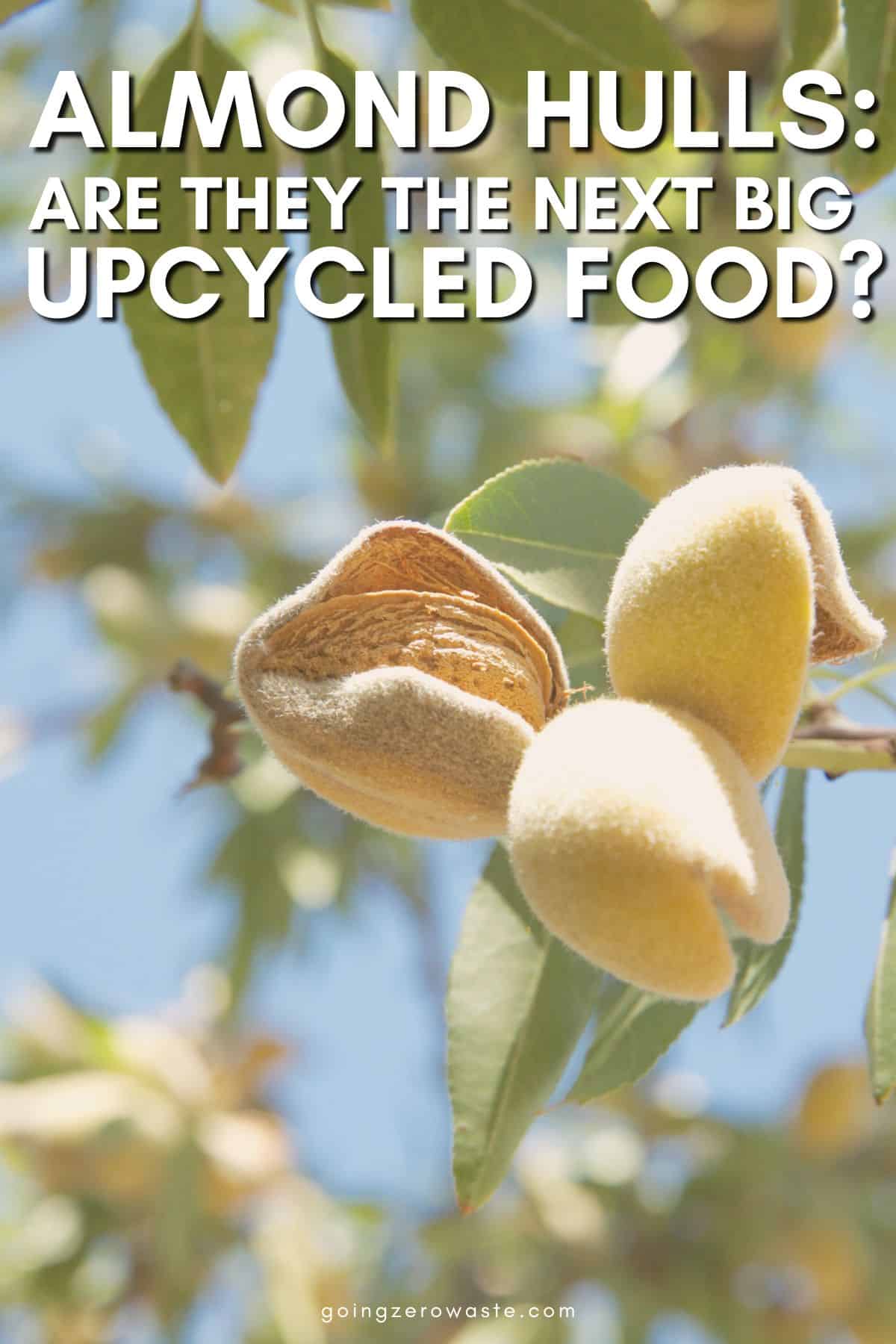[ad_1]
Last Updated on August 17, 2023
Almonds have been the top nut in global new product development since 2006. There are over 14 versatile ingredient forms we’ve come to know and love, like almond milk, almond butter, and almond paste, etc.
Beyond the kernels we eat, almond hulls, shells and trees themselves can be used in mushroom cultivation, soil amendments for crops, animal feed and more. California’s almond farmers have always taken a zero-waste approach to everything they grow and, with goals set in 2018, are working to find optimal uses for these coproducts that bring both environmental and economic benefits.
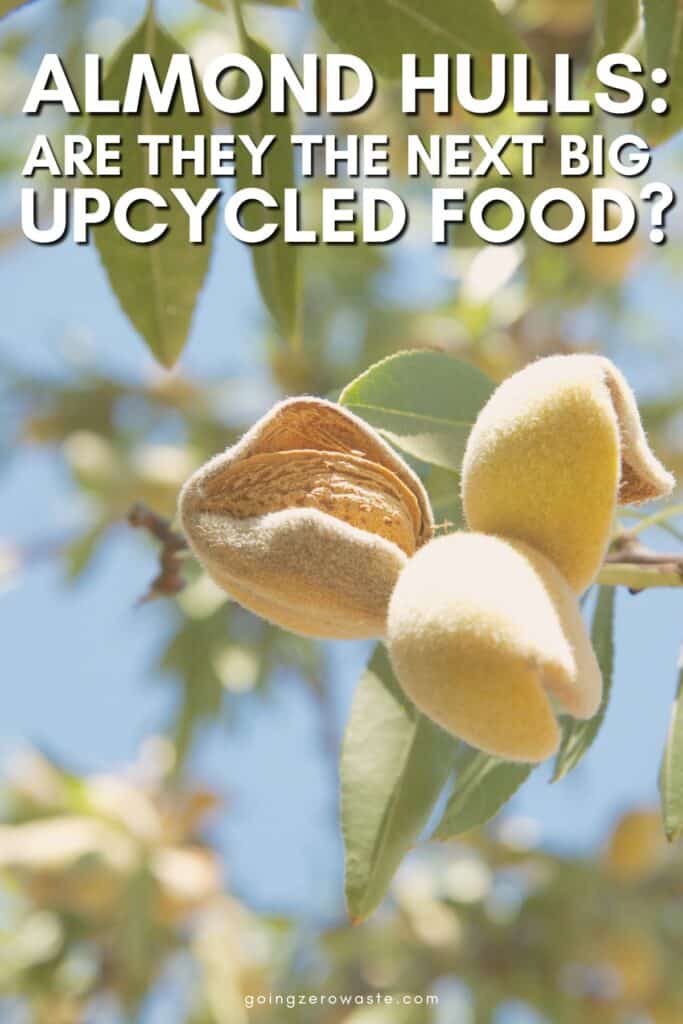

This post was sponsored by the Almond Board of California. All thoughts and opinions are my own; for more information please see my disclosure policy.
But this is only the beginning of this plant’s potential. A new research partnership between the Almond Board of California and Mattson, a food and beverage innovation firm, is exploring how consumers may one day also eat almond hulls for nutritional and sustainability benefits.
Here’s a sneak peek into how almond hulls may become the new trending upcycled food.
what parts make up an almond?
You might be wondering what an almond hull even is? For starters, almonds technically are the seeds of fruit produced by almond trees.
Almonds are part of the stone fruit family, also known as drupes. Peaches and plums also fall into this category. But unlike traditional fruits in this botanical family, with almonds we tend to desire the interior seed more than the fleshy exterior.
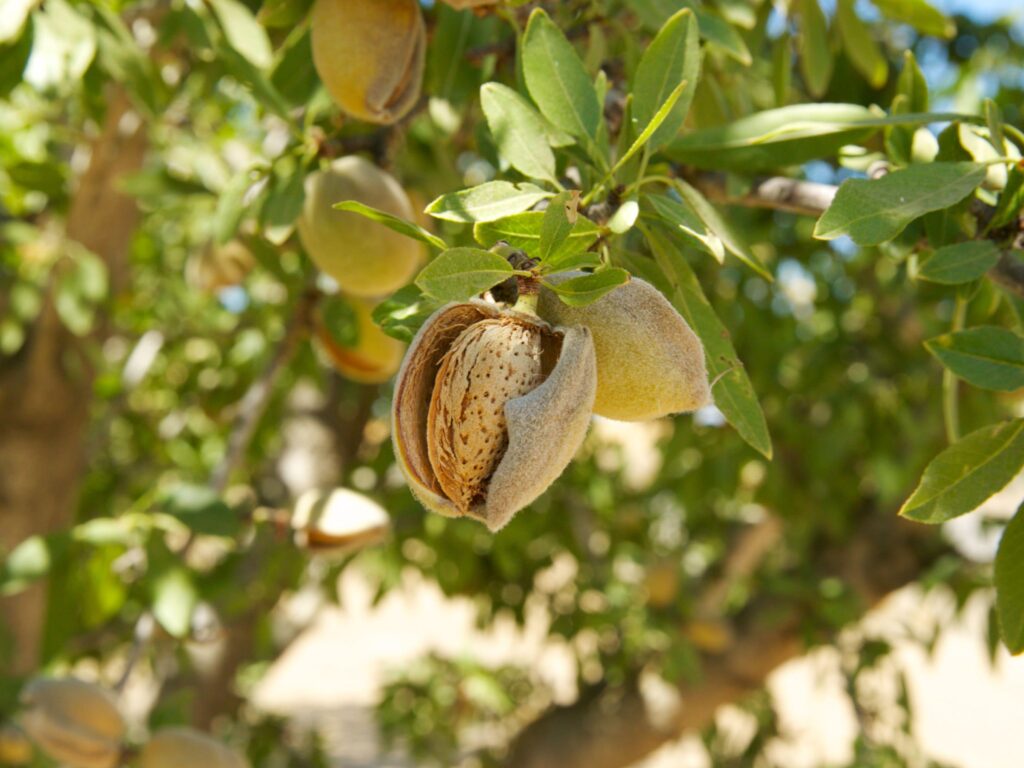

The almond has four parts:
- Hull (fuzzy, fleshy)
- Shell (hardest part, similar to the pit of a peach)
- Kernel (the part we eat)
- Woody biomass (the tree they grow on)
“When almonds are grown, we’re most familiar with the parts we eat, the kernel,” says Al Banisch, chief strategy officer for Mattson, a food and beverage innovation firm.
“…With almond production though…there are three other parts, or co-products, associated with that almond. One of them is the shell, the hard thing that surrounds the kernel that we eat. The second part is the hull…which is kind of a soft fleshy outer cover, and then there’s the tree itself.”
We eat the kernels, but what about the hull and the shell? Currently almond hulls are used as dairy feed, offsetting the need to grow other feed crops like alfalfa. Shells are used for things like livestock bedding, and the woody material (after the trees reach the end of their productive lives) is either used to create electricity or added back into the soil to improve soil quality.
Almond trees capture and store a significant amount of carbon over their 25-year life cycle in a process called carbon sequestration. Almond farmers are pioneering climate-smart agriculture through whole orchard recycling.
At the end of the almond orchard’s lifecycle, whole almond trees are ground up and incorporated back into the soil. This extends carbon sequestration by storing it in the soil, helping to address climate change.
Being zero waste on a farm means using every part of the almond tree and, beyond these uses, there’s a lot of fantastic pioneering in this space including making them into upcycled food for consumers!
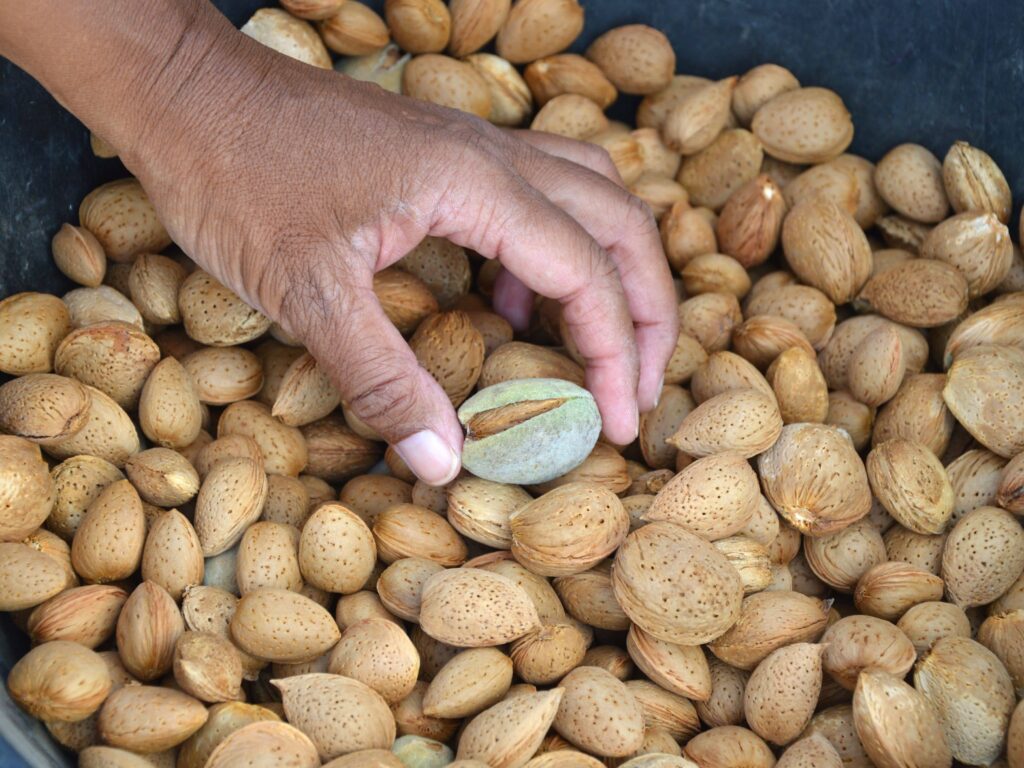

innovative uses: almond hulls as human food
Looking at an almond hull, your first thought wouldn’t be to eat it. It’s a fuzzy outer hull that encases the almond shell (which contains the kernel we eat).
But Mattson’s proof-of-concept research has found that almond hulls bring nutritional value in the form of fiber, vitamins and minerals, while offering a unique flavor profile.
You wouldn’t eat the almond hull directly like an almond: You’d instead be ingesting it through a more refined, powdered form – something that can be used as an ingredient.
Almond hulls taste mildly bitter with desirable fruity and vanilla notes, and may have promising uses for human consumption as a value-add ingredient in bakery products, coffee and nutritional bars.
“When you think about fruity bitter flavor, where do you want that? That led us to think about things like coffee and tea,” said Banisch, “The problem to solve there is, we love coffee, but coffee production is sometimes associated with some environmental challenges [like] rainforest deforestation.”
“So how can we help leverage the fruity bitter of the almond fruit to help address that global challenge?” Banisch continued, “We’re not going to put coffee out of business – the sample product we developed is about 80% coffee and 20% almond fruit. So therefore we’re taking one fifth of the demand for coffee out and still delivering…a delicious product.”
Based on the research partnership with Mattson, here are some innovative ways almond hulls could be used in consumer products:
- Performance nutrition bars – almond hulls add fiber and antioxidants that popular bars on the market don’t have
- Tea beverage – roasting almond hulls, grinding + using them to brew tea delivers the bitterness of black tea w/ lovely floral notes
- High-fiber bread – incorporating certain levels of almond hulls can provide an excellent source of fiber
- Coffee replacement – almond hulls can replace up to 20% of coffee beans in traditional coffee while adding a more complex flavor profile
- Beer – Mattson is currently researching if hulls can replace hops in brewing beer
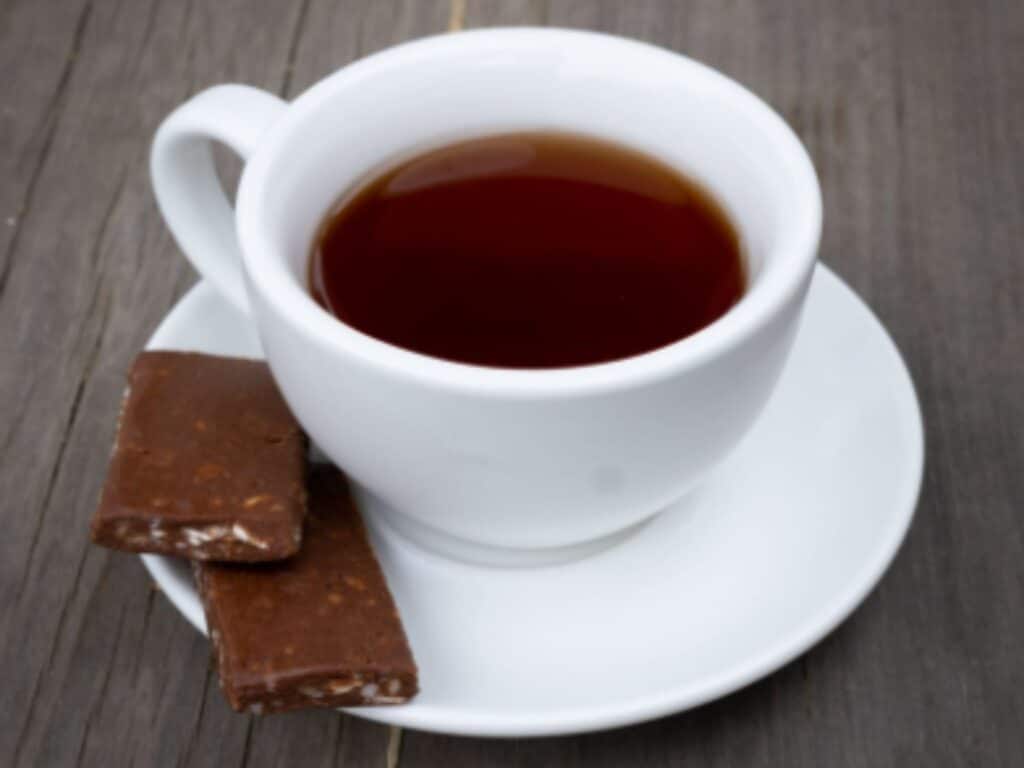

how upcycled food is tackling waste
So why should we be excited about these innovations? For starters, it helps reduce waste.
While traditional methods of utilizing almond hulls are still circular (animal feed, bedding, etc.), upcycling it into consumer goods is a more efficient way to make sure none of it goes to waste (and we don’t miss out on the valuable health benefits).
In Mattson’s almond hull nutrition bar prototype, the almond hull flour more than doubled the fiber content and halved the total carbohydrates compared to popular protein bars. So this makes almond hull flour a more efficient and healthy option we should be utilizing.
“Americans don’t eat nearly enough dietary fiber on average,” said Banisch, “they’re definitely lacking in that part of their diet so [using the almond hull is] a great way to incorporate it into your diet.”
As upcycled food gains popularity and consumers seek convenient ways to eat more fiber, almond hulls have the potential to help manufacturers generate more value and contribute to a circular economy.
The almond industry already takes a zero-waste approach in the orchard, so this project is another example of how almond farmers continue to look for more valuable uses and farming practices that benefit people and the planet.
California almond farmers have drastically reduced the amount of water used to grow almonds thanks to widespread adoption of micro irrigation and research! They’ve already reduced water usage by 33% and they’re on track to reduce it by another 20% by 2025. As of this year, they’ve already hit 15% of that 20% goal.
“I will tell you you’re going to see much, much more [upcycled foods],” said Banisch. “The more we talk about it, the more we make people aware of the potential, the sooner it’ll happen.”
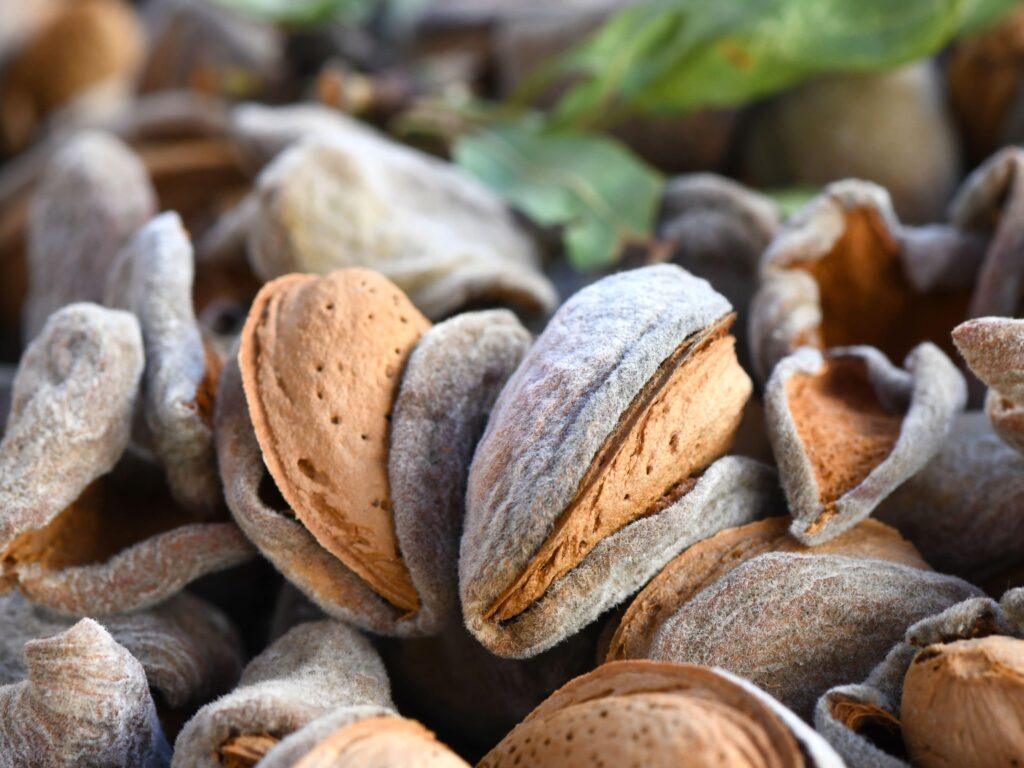

almond hulls in stores: how you can help make it happen
So, when can we see almond hulls in stores? In addition to partnering with Mattson on innovation potential, the Almond Board of California is working with the FDA to conduct the types of food safety, nutritional profile and allergen data required for new ingredients to be used in our food system. So while there isn’t a specific date yet, the more we make people aware of almond hulls’ potential, the sooner they’ll hit store shelves.
A lot has to happen, but according to Mattson, it could happen quickly if someone steps up and says “hey, I see a business opportunity here to take those hulls from the almond growers and do something useful with them.”
How can you help? One way is going to your local craft brewery and talking about almond hulls potentially being used to make beer. Ask them if they’d be open to trying something like that – they’d be the first on the market to sell it!
Would you try any of these almond hull products? What kind of product are you most excited about?
[ad_2]
Source link
